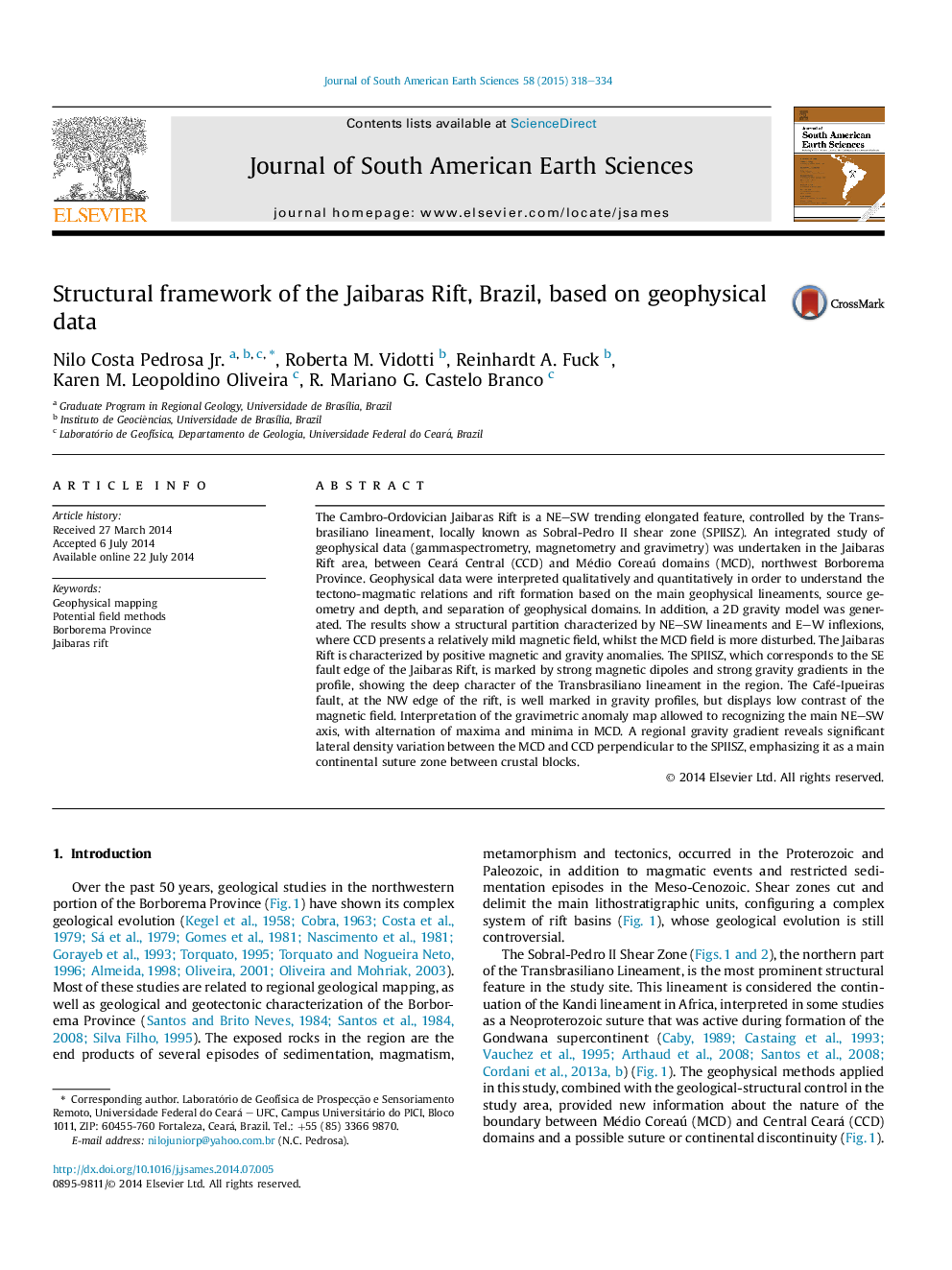| کد مقاله | کد نشریه | سال انتشار | مقاله انگلیسی | نسخه تمام متن |
|---|---|---|---|---|
| 4682252 | 1635151 | 2015 | 17 صفحه PDF | دانلود رایگان |

• Geophysical data highlight the structure of the Jaibaras rift in NE Brazil.
• 471 new ground gravity stations were acquired.
• Geophysical data and 2D gravity modeling were integrated with geological data.
• Main crustal discontinuities in the Jaibaras rift area are discussed.
The Cambro-Ordovician Jaibaras Rift is a NE–SW trending elongated feature, controlled by the Transbrasiliano lineament, locally known as Sobral-Pedro II shear zone (SPIISZ). An integrated study of geophysical data (gammaspectrometry, magnetometry and gravimetry) was undertaken in the Jaibaras Rift area, between Ceará Central (CCD) and Médio Coreaú domains (MCD), northwest Borborema Province. Geophysical data were interpreted qualitatively and quantitatively in order to understand the tectono-magmatic relations and rift formation based on the main geophysical lineaments, source geometry and depth, and separation of geophysical domains. In addition, a 2D gravity model was generated. The results show a structural partition characterized by NE–SW lineaments and E–W inflexions, where CCD presents a relatively mild magnetic field, whilst the MCD field is more disturbed. The Jaibaras Rift is characterized by positive magnetic and gravity anomalies. The SPIISZ, which corresponds to the SE fault edge of the Jaibaras Rift, is marked by strong magnetic dipoles and strong gravity gradients in the profile, showing the deep character of the Transbrasiliano lineament in the region. The Café-Ipueiras fault, at the NW edge of the rift, is well marked in gravity profiles, but displays low contrast of the magnetic field. Interpretation of the gravimetric anomaly map allowed to recognizing the main NE–SW axis, with alternation of maxima and minima in MCD. A regional gravity gradient reveals significant lateral density variation between the MCD and CCD perpendicular to the SPIISZ, emphasizing it as a main continental suture zone between crustal blocks.
Journal: Journal of South American Earth Sciences - Volume 58, March 2015, Pages 318–334